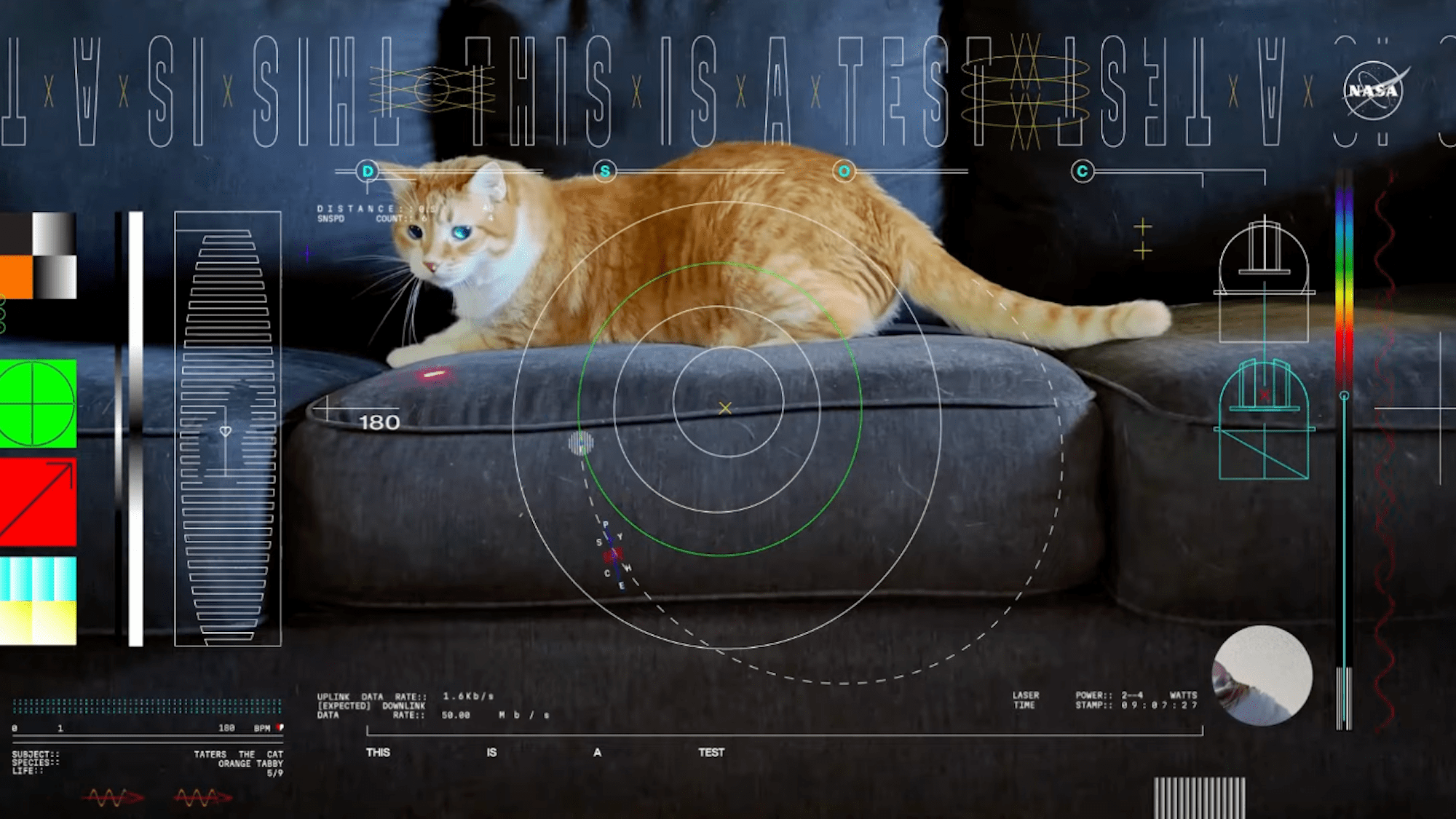

NASA’s Psyche spacecraft accomplished yet another historic communications achievement less than a month after successfully firing its “first light” laser data transmission. On December 11, the onboard Deep Space Optical Communications array’s flight laser transceiver sent an “ultra-high definition” video clip approximately 19 million miles back to Earth—a new record not just for transmission, but for cat videos, as well.

According to NASA’s December 18 announcement, Psyche sent an encoded near-infrared laser beam to Earth last week at its maximum bandwidth speed of 267 megabits per second (Mbps) while en route to the space probe’s final destination, a metal-heavy asteroid located between Mars and Jupiter. Roughly 101 seconds later, researchers at Caltech’s Palomar Observatory received and downloaded the data package. The team then sent each individual video frame over to NASA’s Jet Propulsion Laboratory, where the clip played in real time. And then, a cat named Taters made space exploration history.
As NASA explains, the 15-second video clip’s main character is an ode to some of the very first television test broadcast transmissions. Beginning in 1928, many of these earliest airings included a tiny statue of popular cartoon character, Felix the Cat. In honor of cats’ long lineage in telecommunications, Psyche’s brief scene showcases a sizable orange tabby named Taters chasing a red laser pointer across a couch while chilled out music plays in the background. Overlaid graphics also display information about the cute cat such as its heart rate, alongside more pertinent project info like Psyche’s orbital path, technical specs, and data bit rate information.
[Related: NASA’s Psyche wins first deep space laser relay.]
Even across millions of miles of space, the demonstration reportedly holds up to some of the best internet download rates here on Earth.
“Despite transmitting from millions of miles away, [Psyche] was able to send the video faster than most broadband internet connections,” Ryan Rogalin, JPL’s receiver electronics lead for the project, explained on Monday. “In fact, after receiving the video at Palomar, it was sent to JPL over the internet, and that connection was slower than the signal coming from deep space.”
Thanks to this and future Psyche laser system testing, NASA plans to ready astronauts’ communications arrays for longterm voyages to the moon and Mars.
“Increasing our bandwidth is essential to achieving our future exploration and science goals, and we look forward to the continued advancement of this technology and the transformation of how we communicate during future interplanetary missions,” NASA Deputy Administrator Pam Melroy said in the agency’s December 18 announcement.
For now, however, Taters takes center stage—although the video’s focal point wasn’t only a callback television’s very first test broadcasts.
“Today, cat videos and memes are some of the most popular content online,” reads NASA’s announcement, adding in its accompanying material that, “Coincidentally, cats like to chase lasers.”
